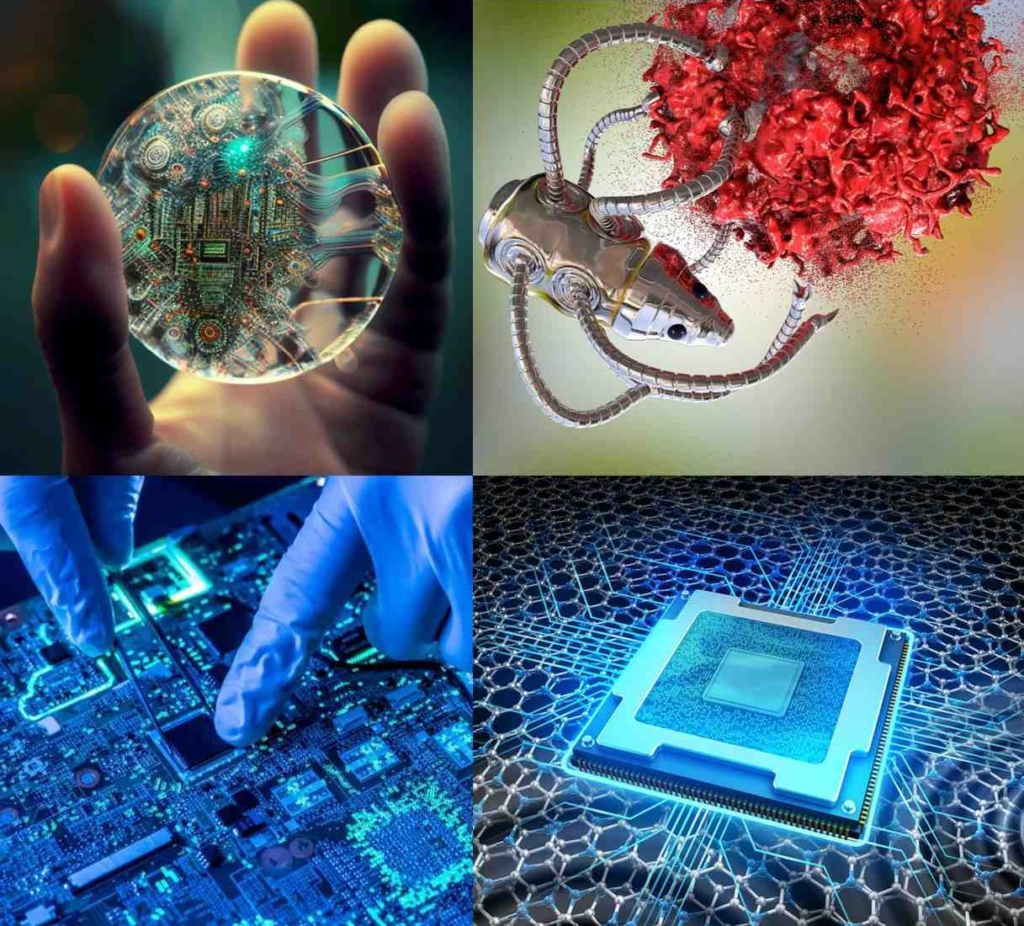Nanotechnology, the manipulation of matter on an atomic and molecular scale, has revolutionized various fields including medicine, electronics, and materials science. By exploiting unique properties at the nanoscale, scientists and engineers have developed innovative applications that promise to transform industries and improve quality of life. This article explores the diverse applications of nanotechnology across different sectors and its potential impact on future advancements.

Understanding Nanotechnology
Nanotechnology involves the manipulation and control of materials at the nanoscale, typically between 1 to 100 nanometers. At this scale, materials exhibit novel physical, chemical, and biological properties that differ from their bulk counterparts. These properties enable the development of new materials, devices, and systems with enhanced performance and functionality.
Key Concepts
- Nanomaterials: These are materials engineered at the nanoscale, such as nanoparticles, nanotubes, and nanowires, which exhibit unique properties like high strength, conductivity, and catalytic activity.
- Nanomedicine: This field focuses on the application of nanotechnology in healthcare, including drug delivery systems, diagnostic tools, and regenerative medicine.
- Nanoelectronics: Nanotechnology has enabled the development of smaller, faster, and more efficient electronic devices by miniaturizing components and improving performance through nanoscale engineering.
Applications in Medicine
Drug Delivery Systems
Nanoparticles can encapsulate drugs, allowing for targeted delivery to specific cells or tissues in the body. This enhances drug efficacy, reduces side effects, and improves patient compliance. Examples include liposomal formulations for cancer treatment and nanoscale carriers for gene therapy.
Diagnostic Tools
Nanotechnology has enabled the development of sensitive diagnostic tools for detecting biomarkers and pathogens at early stages of disease. Nanosensors and nanoprobes offer high specificity and sensitivity, enhancing the accuracy of medical diagnostics.
Regenerative Medicine
Nanomaterials are used to create scaffolds and matrices that mimic the extracellular environment, promoting tissue regeneration and wound healing. Nanotechnology plays a crucial role in tissue engineering, organ regeneration, and controlled drug release for tissue repair.
Applications in Electronics
Miniaturization of Devices
Nanotechnology enables the miniaturization of electronic components such as transistors, memory chips, and sensors. This reduces power consumption, improves device performance, and supports the development of wearable electronics and IoT devices.
Flexible Electronics
Nanomaterials like graphene and carbon nanotubes are used to create flexible, transparent conductors and semiconductors. These materials are essential for flexible displays, electronic skins, and bendable electronic circuits.
Quantum Computing
Nanotechnology is crucial for the development of quantum computing systems, which leverage quantum phenomena at the nanoscale to perform complex calculations exponentially faster than classical computers. Quantum dots and superconducting nanowires are key components in quantum computing architectures.
Applications in Materials Science
Lightweight and Strong Materials

Nanotechnology has facilitated the development of lightweight, high-strength materials such as carbon nanotubes, graphene-based composites, and nanoporous metals. These materials find applications in aerospace, automotive, and construction industries, where strength-to-weight ratio is critical.
Energy Storage and Conversion
Nanoscale materials are used in energy storage devices such as batteries and supercapacitors, enhancing energy density, charging rates, and cycle life. Nanotechnology also contributes to the development of efficient solar cells, fuel cells, and hydrogen storage systems for renewable energy applications.
Environmental Remediation
Nanomaterials are employed in environmental remediation processes to remove pollutants and contaminants from air, water, and soil. Nanoparticles with catalytic and adsorption properties can degrade organic pollutants, neutralize toxins, and purify wastewater.
Future Outlook
The rapid advancement of nanotechnology continues to drive innovation across multiple industries, promising breakthroughs in personalized medicine, quantum computing, sustainable energy solutions, and environmental conservation. As researchers explore new materials, manufacturing techniques, and applications, nanotechnology is poised to play a transformative role in shaping the future of technology and society.
Conclusion
Nanotechnology has emerged as a powerful tool for addressing complex challenges in medicine, electronics, and materials science. By harnessing the unique properties of nanomaterials, scientists and engineers are pioneering novel applications that enhance healthcare delivery, revolutionize electronic devices, and enable sustainable solutions for global challenges. As the field continues to evolve, interdisciplinary collaboration and ethical considerations will be crucial in maximizing the benefits of nanotechnology while addressing potential risks. Embracing the potential of nanotechnology promises to usher in a new era of innovation and discovery, shaping a more connected, efficient, and sustainable future for humanity.



